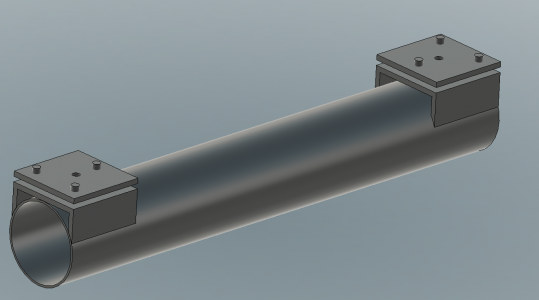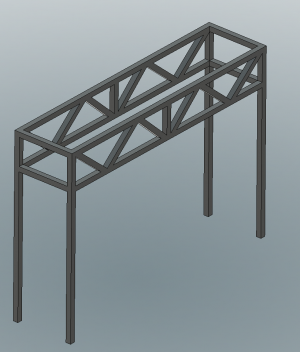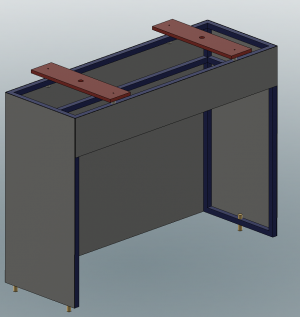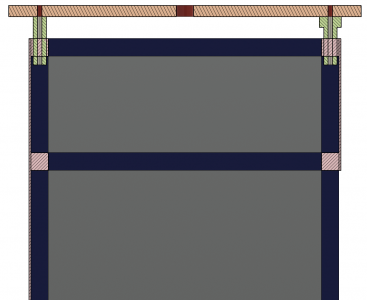They are indeed jack screws. I am of the view that it is significantly better to have those screws bear on two different cross bars--one at the headstock end and one at the tailstock end of the bed. That way you are not adding to the twist stiffness of the structure that you are trying to twist.The additional bolts at the top of the frame seen in post #30 can be adjusted to twist with respect to the frame. They effectively are jack screws. Now the 1/4" may be a bit flimsy, but there is some adjustment besides the feet. Is it better to have one long thick bar picking up the two bolts, or two independent (cross) bars?
I meant each foot of the bed. That lathe bed has two feet, each with a single bolt through its center. So your task to impart twist is to apply a moment on one foot relative to the other. That requires supporting loads from the foot into some support structure, through the structure, and into the other foot.Can you elaborate on this? Understand the jack screw part. And the plate positioning relative to the lathe. What are you recommending for the reinforcement of the existing plate/tubing setup? Do you think any of this can be done "in place", with simple levering, or do I need to totally lift away the lathe? By each foot, what are you referring to?
You are trying to twist the frame. Ideally, a round section has the best ability to support that load. So I could imagine a length of pipe running along the bed along the top of the frame, with two plates that are independently adjustable, to which the lathe feet are bolted:

Now, I fully understand that is not a structure you are necessarily prepared to build into your frame. So let's think about the easiest way for you to achieve torsional rigidity. This is one design for the frame:

The truss structure gives stiffness to the two long sides; twisting the two ends relative to each other requires bending each side in the vertical plane, so that stiffness would give you more what you want. But wait, that's a lot of fabrication. So some have suggested sheeting your frame with a skin. That seems much easier, and accomplishes much of the same thing (a few braces along with the sheet cover would be better, depending on the thickness of the sheet). One thing I'll suggest is not leaving the front of the frame as just a simple cross member. That does give you some nice room for storage, but you give up too much stiffness in my view. I'd want at least the upper portion reinforced, as my truss structure does. It's not so interesting to draw a sheeted frame, but I'm happy to do some more sketches to the extent it helps.
To sum - there are two aspects. One is making a torsionally stiff frame. I think the easiest way for you to do that is add metal sheeting to the sides. I think you would get significant benefit from some additional tubes tied into your existing top tubes, but there's certainly diminishing returns. The second aspect is affixing your lathe bed to the stiff frame in a way that lets you twist one foot relative to each other. Jack screws and pads can be used to do that, but as RJ points out, you need the jack screws to bear on something stiff enough that it isn't undermining your efforts.



